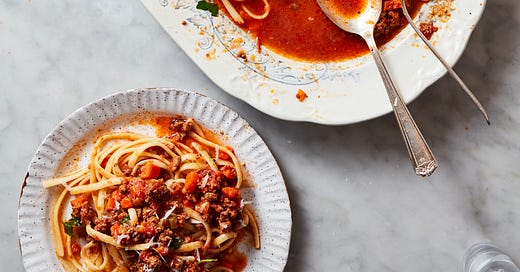FEEDING A CROWD // vol. 3
When one family, one meal fails you (how to deal with special diets, food allergies, omnivores and picky eaters—under one roof)
Welcome! ♡ This is a reader-supported site. This post is free for all, but pledging your support via paid subscriptions is deeply appreciated! Link below.
Hello!
And welcome, new subscribers! I’m coming to you today with a strategy guide, one of my favorite things to write in this space lately, and it starts with a story:
“Mama, I think Uncle Timmy has …




